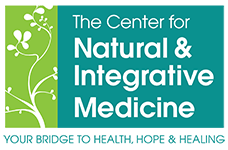Gut Healing Protocols- A Functional Approach
The 5-R Protocol developed by the Institute of Functional Medicine is the approach I use for healing digestive conditions such as IBS, SIBO, GERD, celiac disease and IBD (Crohn’s and ulcerative colitis) for good.
This protocol also helps to alleviate symptoms related to gut-health such as acne, anxiety, autoimmune conditions, brain fog, fatigue, joint & muscle pain, chronic headaches & migraines and more. Since your digestive tract is where most of your immune cells are and where you absorb your nutrients, it makes sense that improving gut health can improve health across the whole body.
The 5-R Protocol is a systematic and comprehensive method that not only improves symptoms but it helps heal so you get lasting results. So what’s involved?
1) Remove
We want to remove anything that could be irritating to the gut such as:
- • Food – We want to remove any type of gut irritant such as alcohol, caffeine, processed food and food additives. You may have a hard time digesting certain type of carbohydrates. Or you may have food intolerance, sensitivity or food allergy. This is where a gut-healing food plan comes into play.
- • Medications & Supplements – Over-the-counter medications such as heartburn medication and NSAIDs (like aspirin and ibuprofen) are known to cause digestive dysfunction. We also want to consider the potential side effects of prescription medications. The increased use of supplements can also cause digestive symptoms.
- • Stress – It’s not just a feeling! Stress causes a biochemical reaction by releasing a hormone called cortisone into your blood stream. Too much cortisol can cause inflammation in the digestive tract.
- • Infections, bacteria, parasites and pathogens that may require treatment
2) Replace
Depending on your health condition and symptoms, you may be lacking certain elements that are key to digestion such as stomach acid, bile and digestive enzymes. You also may be deficient in nutrients. Part of your gut-healing plan may include:
- • Supplements to replace the missing elements such as betaine HCL, bile salts, and enzymes that help digest fat, lactose, carbohydrates and protein
- • Foods containing nutrients that help the body produce these elements. For instance, bitter foods can help stimulate stomach acid and digestive enzymes.
- • Foods and/or supplements to address nutrient deficiencies. Digestive conditions can affect the absorption of nutrients such as B12, iron, calcium, magnesium and zinc.
3) Repopulate
Remember, elimination diets are not forever diets. Once symptoms have improved significantly, it’s time to reintroduce foods that will help rebalance the microbiome. This is the term for the collection of good gut bacteria that play a role with immune, digestive, and metabolic health. It’s important to keep these bugs happy!
4) Repair
At this stage we want to create an environment that supports gut-healing and long-term relief. We encourage repair of the intestinal cells and mucosa, reduce inflammation and help our microbiome find a happy home within our digestive tract. We may include:
- • Foods high in vitamins A, C, D, & E as well as the mineral zinc
- • Foods rich in amino acids such as bone broth
- • Supplements such as L-glutamine, collagen, aloe vera, marshmallow or slippery elm
5) Rebalance
Our lifestyle habits have enormous influence on our digestive system and health. During this phase, we want to address:
- • Stress management
- • Improving sleep
- • Moving more (or less, if necessary)
- • Improving relationships
Every single patient is on their own personalized 5-R protocol. If you found minimal improvement on your own, call our office to set up a consultation and bounce back to health!


